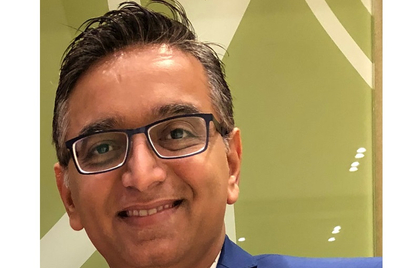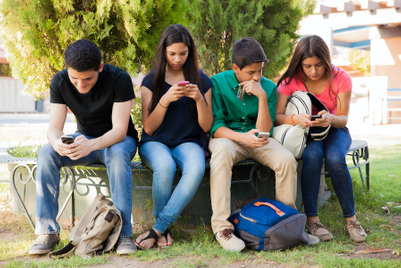Pre-Covid - The traditional template: Purity and pollution
Embedded deep within the psyche of South Asia are ancient cultural paradigms of purity and pollution. They emerge from the classification of states of the body-mind, notions of the sacred and the profane, and definitions of nomos and chaos. These paradigms become the basis for the construction of our social reality and the ways in which we stratify and organise our social order.
A state of ritual purity refers essentially to separating a state of psychic and physical purity from the profane and the ordinary. This separation is perceived to be mandated by divine codes towards maintaining cosmological order. At the level of sacredness, the lens is one of unity and inclusiveness with the divine. As this oneness moves into the body and multiple bodies, their closeness or distance from this divine state has formed the basis for defining a state of ritual purity or of ritual pollution. The social construction of the caste system in India is on the basis of this paradigm.
Here it is relevant to bring in anthropologist, Mary Douglas’s insight that things that disturb our notions of order and meaning are considered dangerous and are therefore tabooed. Disorder created by situations that are not a part of the normal, or disturb our classificatory meaning system, or are in transition between two states become liminal and represent a state of chaos.
Matter out of place is perceived as ‘dirty’ as it threatens our notions of order and nomos.
The same logic extends to perceptions of relationships with those who come under the rubric of ‘other than me or us versus them’. Whether they be other castes or communities, contact with them, especially physical contact through food and touch, was perceived as polluting. In some very orthodox societies, even the shadow of a lower caste person could be polluting for someone in a state of ritual purity.
The impact of education, science and global and liberal thought, brought inclusiveness.
How caste hierarchies, power politics and protectionism have played out in India over the centuries is well known. The evidence of how deep these aquifers of discrimination run, is clear to see in the persistence of honour killings, discrimination against the Dalits and the ferment of communalism.
However, global exposure, the relentless fight against discrimination based on caste by Gandhi and Ambedkar among others, education and emancipation, brought a liberal lens to caste. Vilifying the act of social distancing of others on the basis of caste or community became an integral part of the conversation addressing caste inequalities. Legal sanctions on using caste names and the denying of privileges to depressed castes enabled viewing discrimination based on caste and community, as an atrocity. This allowed for a condemnation of ‘othering’ on a national scale. Urban India saw the boundaries of separation become porous. Inter-caste and intercommunity marriages became acceptable to a degree. The social fabric was becoming more inclusive.
The scientific discourse also acted as an equaliser as notions of hygiene became associated with definitions of ‘clean’. Soap, detergent and phenyl became essential to household hygiene. However, despite valiant efforts by several multi-national companies, NGOs, governmental ASHA workers and social workers, the habit of washing hands with soap, completely eschewing open defecation or stopping spitting on roads, never really became an integral part of daily life. Under the Swachh Bharat Abhiyan, the Government, companies like Unilever, Reckitt Benckiser and many others, adopted CSR enabled outreach programs to inculcate perceptions of hygiene, but the germ discourse never did penetrate a psyche conditioned to purification through the use of water alone.
What Covid has brought
The virus has brought in its wake fundamental shifts in the cultural fabric of India. Contagion is no longer defined by caste and community alone. It has a new avatar. It adds to the existing paradigm of the polluted other, the notion of the germ ridden other.
This ‘other than me’ is a person who is from ‘another community’ than mine. These communities are based on religion, on class or caste or the kind of lifestyle they are living. The rich international traveler is a carrier of contagion for those who are lower on the socio-economic scale. But for the “Have’s” the source of contagion remains the lower income worker at the bottom of the pyramid. Both ways, the ‘other’ is a potential threat.
Inclusiveness has begun to suffer on the Indian landscape as people of other communities are branded as murderers, those from other classes and castes are feared and those from other streets and localities are becoming the objects of suspicion and fear. The strengthening of notions of social contagion is apparent.
The act of ‘social distancing’ to prevent contagion has brought increasing legitimacy and permission for psychological distancing.
Physical distancing is being translated as distancing from the socially different ‘other’. Going ahead, this may have regressive consequences for the social fabric of India. But at present, the virus grants legitimacy to the act of social distancing and an obsessive need to create protective boundaries and protective rituals.
Localities, streets, cities and states have set up hard boundaries that cannot be crossed. Protectionism is gaining validation because it is perceived as the only means to safety. The boundaries between inside and outside of the home are becoming solidified with the need for protecting the ‘safe inside’ from the ‘dangerous outside’. These ways of being are not new to India, they had been submerged, are now visible on the surface and will have implications for emerging social paradigms.
The fear psychosis around the virus has gone deep into life as it impacts behaviour. Behaviour has changed as the threat to the body, one’s own and those of ‘others like me’, is perceived to be real and immediate. The search for remedies, preventives, prophylactics and immunity boosters has created a new market for pharma companies. There is a stronger handle to exploit the vulnerabilities of a vast population under threat.
Implications of this threat for behavior change: The medicalisation of life
As the threat of contagion increases the sense of personal vulnerability, safety and protection are emerging as powerful drivers for behaviour change. As the virus is located within the scientific discourse, safety from the virus also must be through science. And science in this case dictates what should be done through the medicalisation of life.
As this discourse enters society it revolves around contagion, the carriers of contagion, those who help contain contagion and those who wantonly invite the spread of contagion by flaunting the rules of containment. Hygiene, germs, antiseptics, hand sanitisers, the paraphernalia of the surgical wards in the shape of masks and gloves have replaced water, rules of commensality and endogamous marriage.
What years of advertising campaigns attempting to awaken India to the germ discourse did not manage to achieve has been achieved by the Covid-19. But it is not just a shift from purity to hygiene that we are witnessing. The shift includes transferring the threat of pollution onto a threat of contagion. Earlier, castes and communities were the carriers of impurity. Now, castes, class and community are potential carriers of contagion.
The rituals of purification have just changed form. From homas, and purificatory baths, they have shifted to hand washing, not touching the face and distancing oneself by creating boundaries between ‘us’ and ‘them’
In their twisted form, these new drivers provide power players the legitimacy to appropriate the resources of the ‘contaminated’ communities. Or they create permission for the police to use force and beat into submission those who are seen as spreading contagion because they have broken the rules of maintaining safe distancing. Power walks alongside to create those who are keepers of the faith and those who are a threat to the new faith. And what is being spawned is a breakdown of relationships and a lack of connection between the people who make up this country.
What can brands solve for? What kind of discourse do brands need to initiate through communication?
As safety is the most fundamental driver of the new normal, ‘safe consumption’ will be the next big thing for marketeers to consider.
1. Safety of the home
We are going to see a heightened need for home hygiene and protection. The porosity of the home from the threat of the outside and its contagion will be a real anxiety for homemakers. Garbage, insects, service providers and other carriers of contagion will come up in sharp focus as problems that need to be dealt with for the home to be a safe sanctuary. The inside outside boundaries will need extra care and hygiene consciousness.
2. Safety by pumping up the immunity of the body
Traditionally, the body is perceived to be the most vulnerable to contagion. Internal protection through nutrition and immunity boosters needs to be balanced with external protection via personal hygiene and germ kill products. Food and nutrition brands, exercise and fitness, the entire wellness industry, needs to craft new forms of delivering well-being.
Clothing and accessories, whether online or offline, need to address how they can offset the possibility of contagion. Is it possible to offer safety through virtual trial rooms, sterilised offerings of clothes, bags, shoes, make-up and other forms of accoutrement?
3. Re-defining the value of branded packaged.
Thirdly, we are going to see the growth of ‘safe’ branded, packaged goods. The guarantee and assurance provided by a brand will be the critical edge in marketing to the post covid consumer. Brands that have heritage values of delivering on safe, hygienically manufactured products will score. Yet, others will work towards perfection on this paradigm, which may reach levels of obsessive compulsion for cleanliness not seen before.
4. Re-focusing on quality standard for ingestible products
The future will see ingestible products being evaluated keenly on parameters of safety. Hygiene in preparation and process will become a primary differentiator. The current obsession with washing hands for twenty minutes has already extended to washing every food item, milk packet, vegetable and fruit that crosses the threshold of the home. This will extend to inherent quality of a product, especially in terms of fruit and vegetable as poor quality begins to index contagion.
5. Safety of services and service providers
Delivery is the means to enter into the sanctum of the home. Services that ensure safety at every step of their processes, whether food delivery or other goods will score in this context. Science has the advantage of being secular and a great equaliser. Hygiene can be leveraged to offset divisive notions of contagion as service providers from different communities, armed with scientific paraphernalia of protection, deliver to doorways across the country.
However, the critical question is, how can all of this be leveraged without falling into the trap of social forms of contagion? Protection, safety and hygiene are necessary for the entire society to move ahead. But is it possible to separate hygiene from social contagion? Can the need for hygiene be dialed up without creating divisiveness?
When the entire fabric of a country is under threat from divisiveness how can notions of social integration be brought back? Owning the ongoing threat from the virus as the common predicament of the whole country, society and state may be one way to offset the social anxiety of being targeted as a carrier of contagion.
For concerned and empathetic brands, every type of consumer is god. Sheer economics dictates that there can be no discrimination based on classification by social contagion. Can brands dial up new forms of connectivity through digital means so that the fundamental values of human life are not desecrated on the road to personal safety?
The author is social anthropologist and partner, Quantum Consumer Solutions




.jpg&h=334&w=500&q=100&v=20250320&c=1)
.jpg&h=334&w=500&q=100&v=20250320&c=1)

.jpg&h=334&w=500&q=100&v=20250320&c=1)


.jpg&h=334&w=500&q=100&v=20250320&c=1)







.jpg&h=268&w=401&q=100&v=20250320&c=1)
.png&h=268&w=401&q=100&v=20250320&c=1)


